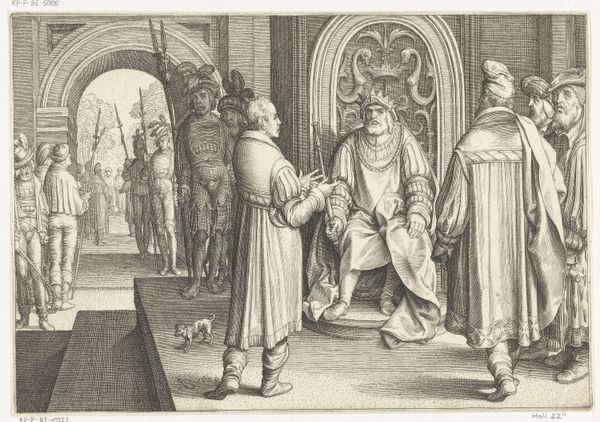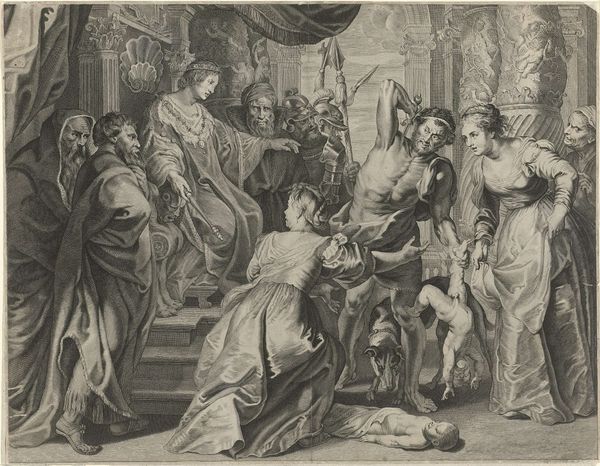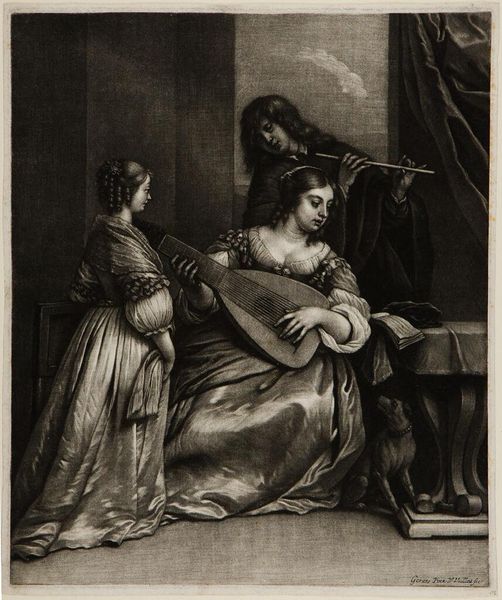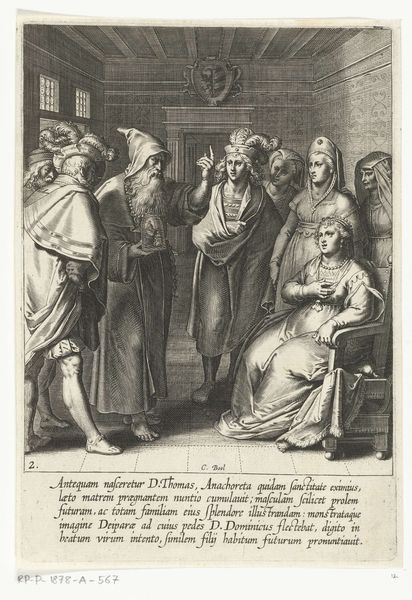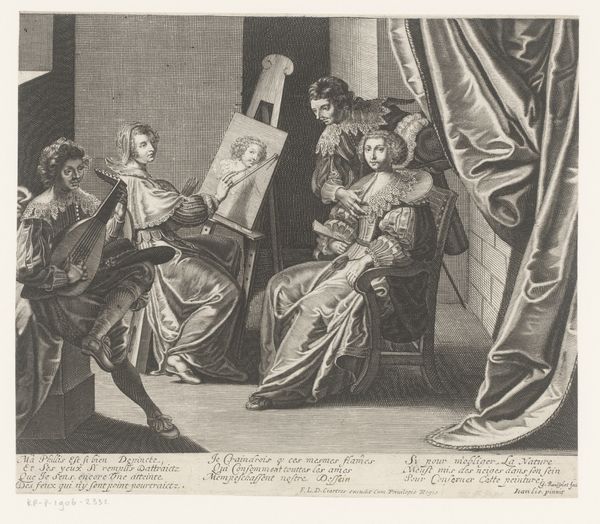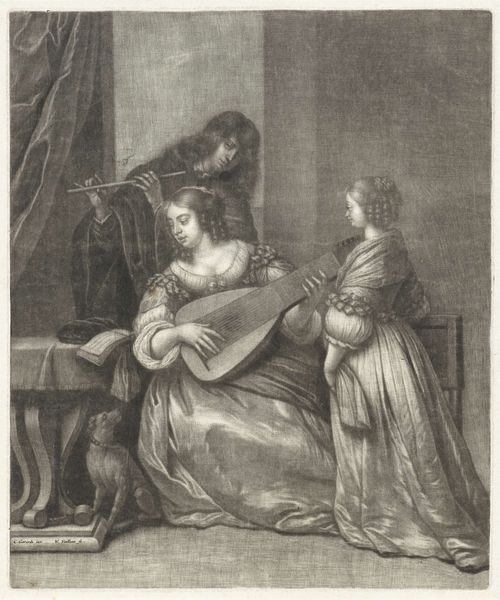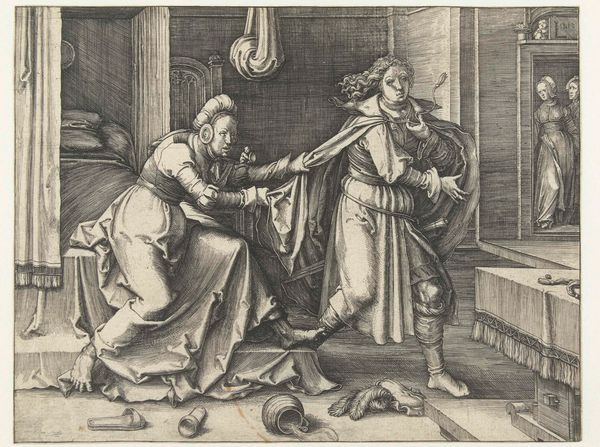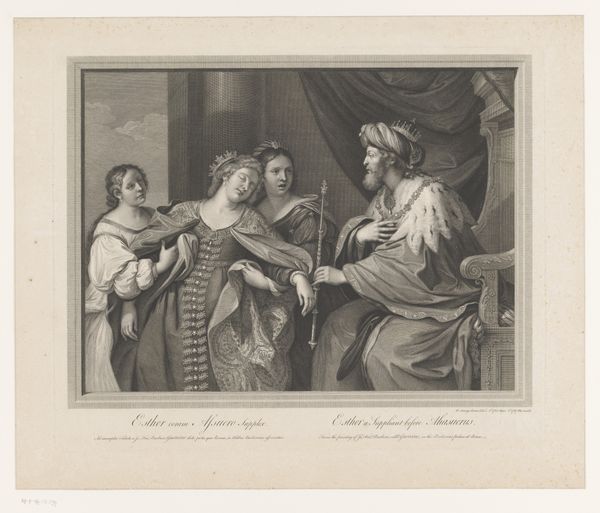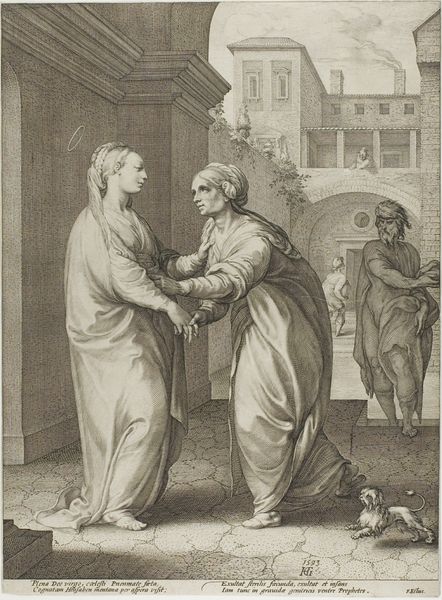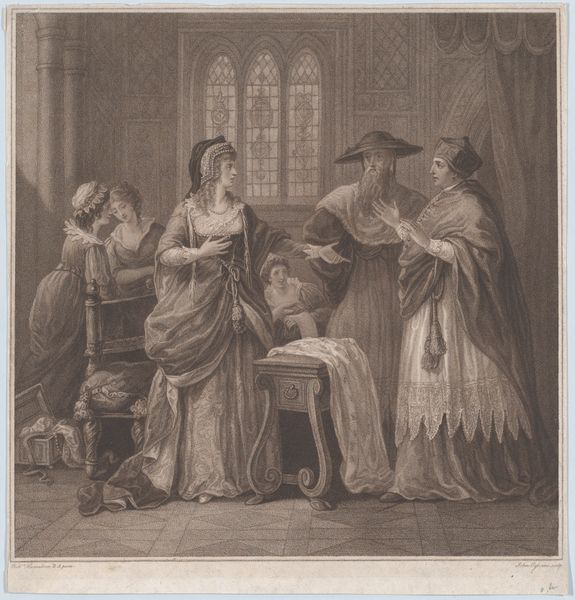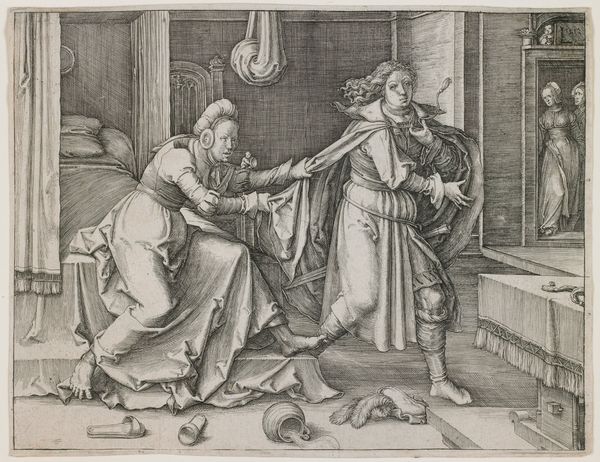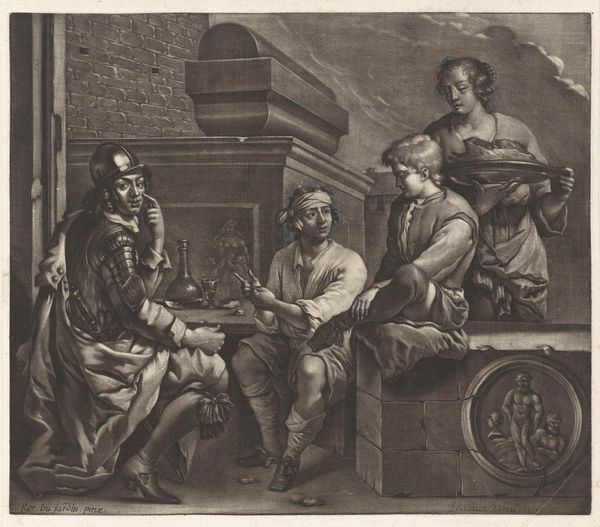
The Betrothal of Raphael and the Niece of Cardinal Bibbiena 1813 - 1814
0:00
0:00
painting, oil-paint
#
portrait
#
figurative
#
neoclacissism
#
narrative-art
#
painting
#
oil-paint
#
figuration
#
history-painting
#
academic-art
Copyright: Public Domain: Artvee
Editor: Here we have Ingres' "The Betrothal of Raphael and the Niece of Cardinal Bibbiena," painted between 1813 and 1814. It definitely has a staged, almost theatrical feel to it. What story do you think Ingres is trying to tell? Curator: It feels less like witnessing history and more like happening upon a tableau vivant, doesn't it? Consider the staging: it’s almost cramped, forcing intimacy upon the figures. The cool shadows conspire with the warm tones of their attire. It's all meticulously orchestrated, Ingres relishing in Neoclassical drama. Do you feel that drama pulling you in, or pushing you away? Editor: Pushing away, a bit. It’s so controlled, almost stiff. Is that typical of Ingres? Curator: Oh, absolutely. Ingres believed beauty resided in ideal forms, in absolute line. His figures often exist in a realm of impossible smoothness, a world cleansed of imperfection. But think, isn't that longing for perfection a profoundly human thing? He almost holds history to the light to admire it. Does that make any sense? Editor: I think so! It's like he's not just painting a betrothal, he's painting his *idea* of a betrothal. More idealized. Curator: Precisely. He wants us to not just observe, but almost...revere. The slight awkwardness adds a certain charm. Like a play where the actors are trying too hard to nail their performance, bless their hearts! Editor: I never thought about it that way before, with all that intention being the core idea. Thanks! Curator: My pleasure! Always remember, sometimes the beauty isn't in what's depicted, but how skillfully the depiction manipulates us. And sometimes a bit of intended emotion creates the whole story for an artwork.
Comments
No comments
Be the first to comment and join the conversation on the ultimate creative platform.



